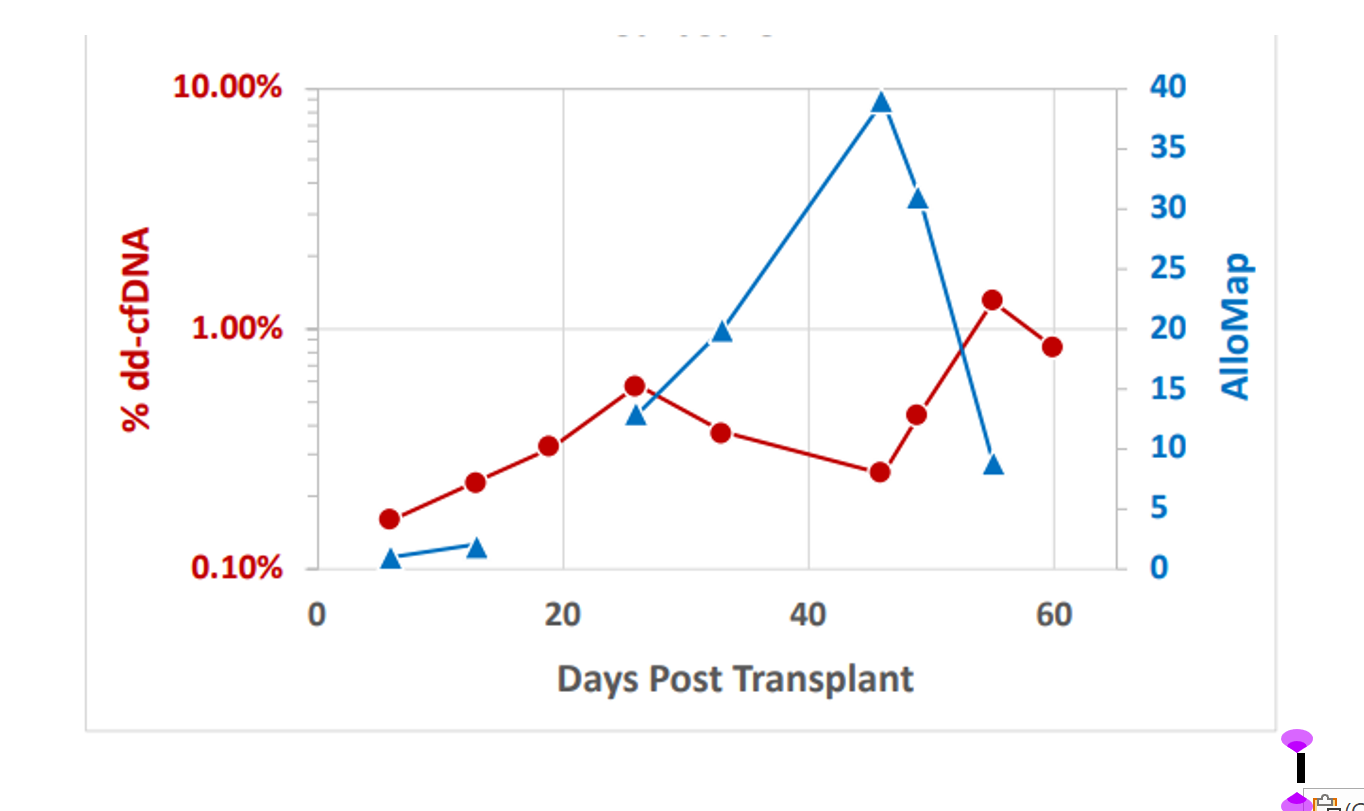Blood cell gene expression in xenotransplantation of genetically modified pig heart into human recipient: Comparison to human allotransplantation
Corbin Goerlich2, Muhammad M Mohiuddin1, Bartley Griffith1, Avneesh Singh1, David L Ayares3, Evgeniya Vaskova4, Robert N Woodward4, Alesha I Luxon4.
1Surgery, University of Maryland, Baltimore, MD, United States; 2Surgery, Johns Hopkins Medical Institute, Baltimore, MD, United States; 3Revivicor, Blacksburg, VA, United States; 4CareDx, Brisbane, CA, United States
Introduction: Gene expression profiling (GEP) has been used in the clinic for over 15 years to monitor immune quiescence in human heart transplant recipients. The composite score from 11 genes has been validated to discriminate rejection from quiescence, however this signature has not been used in other species. In the first human xenotransplant recipient of a genetically modified porcine heart, the GEP score and the results from individual genes were examined in the context of the data from development and use of the allotransplant GEP.
Method: Collection of GEP samples in this first porcine heart to human xenotransplant was the same as in human allotransplantation. Samples were drawn weekly per standard methods, shipped to CareDx, and processed in the CLIA laboratory to generate GEP scores (AlloMap). The standard reported score as well as the results for individual genes were exported for investigational analysis in xenotransplantation. Individual genes (FLT3, IL1R2, ITGAM, ITGA4, PDCD1, RHOU, SEM7A, DCAF12, MARCH8, G6b1, PF4) were evaluated as transcript copy number.
Results: Gene expression from individual genes and the composite GEP score in this xenotransplant experience were all within the range of values observed in human allotransplant. The GEP score was very low early post-transplant, consistent with high levels of corticosteroids commonly used in this timeframe. The GEP score generally followed the established allotransplant trajectory. Individual gene transcript levels were often at extremes, well outside the range of 99% of the >55d allotransplant population. Metagenes clustered together as expected based on allotransplant experience at most timepoints. Deviations from scores consistent with quiescence were attributable to individual metagene clusters, including a novel observation of coordinated elevation of SEMA7A with the DECAF12/MARCH8 metagene cluster.
Conclusion: The established measurement of GEP used to monitor human blood gene expression in allotransplantation appears to be likely applicable to human xenotransplant recipients. Ongoing use of GEP scores established for evaluation of human immune quiescence should continue to be evaluated for use in human recipients of xenotransplants.

[1] monitoring
[2] GEP
[3] gene expression profiling